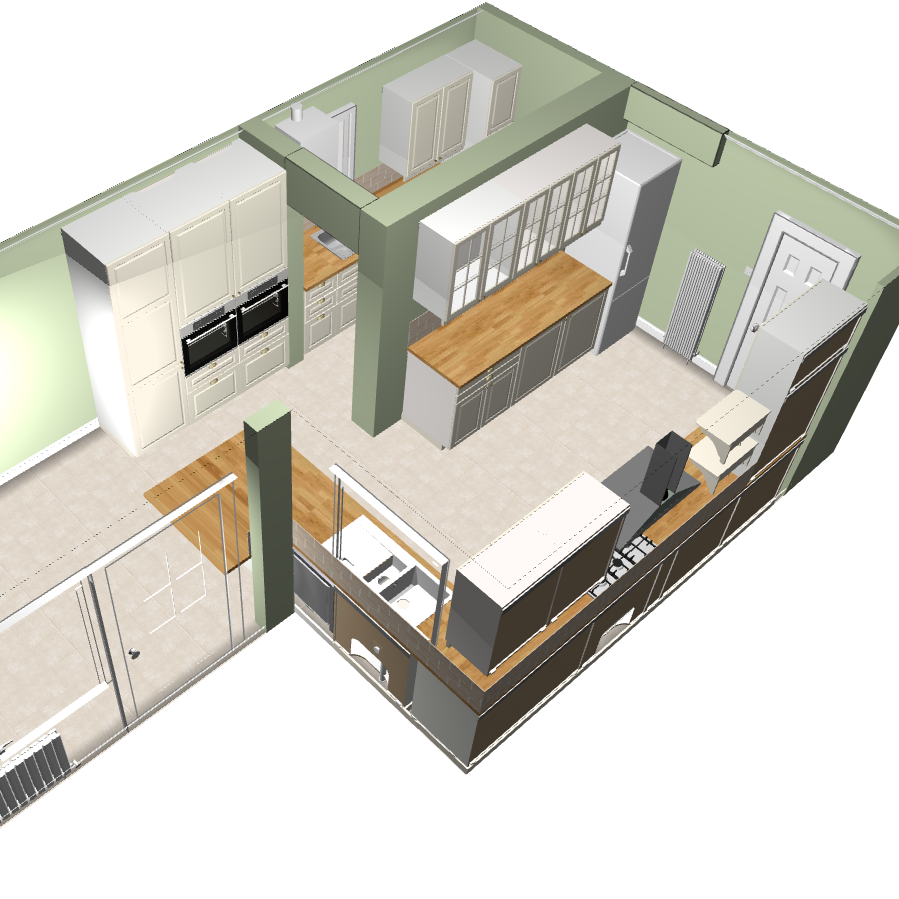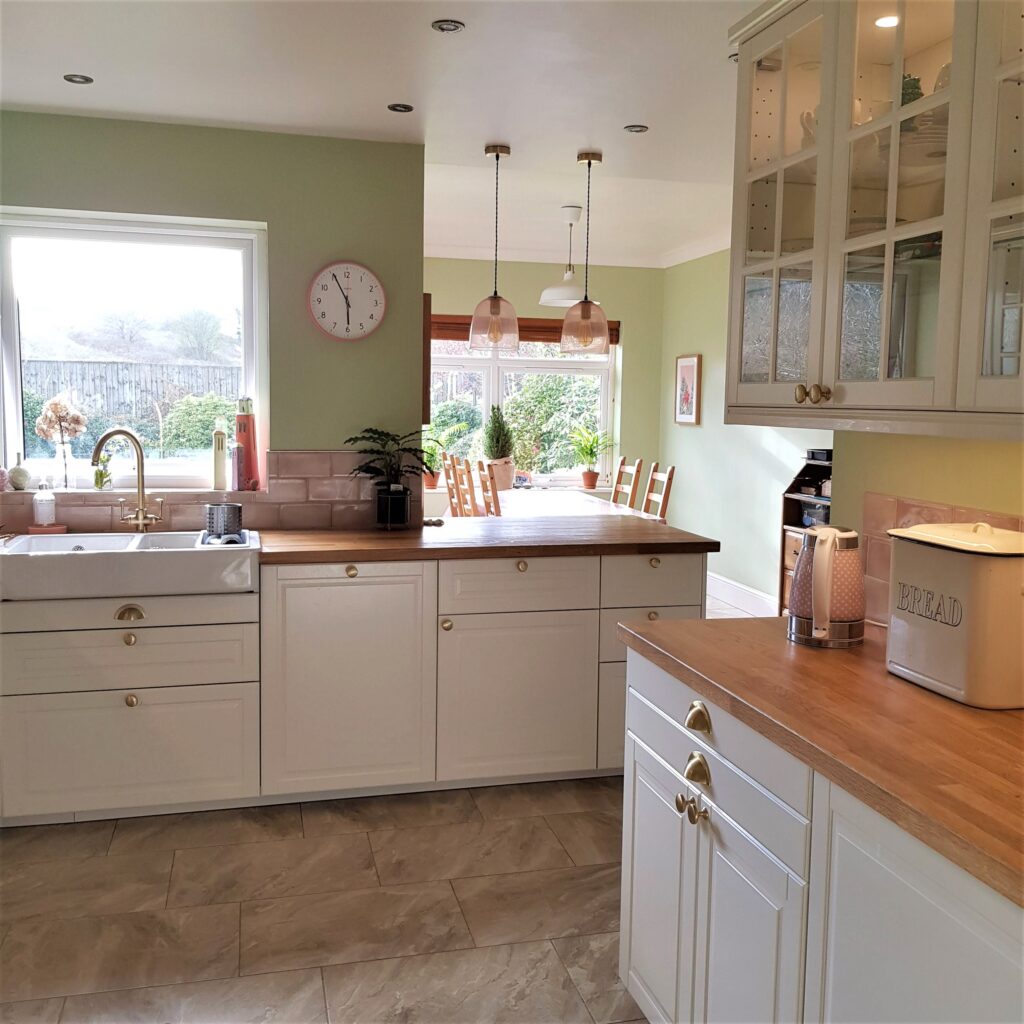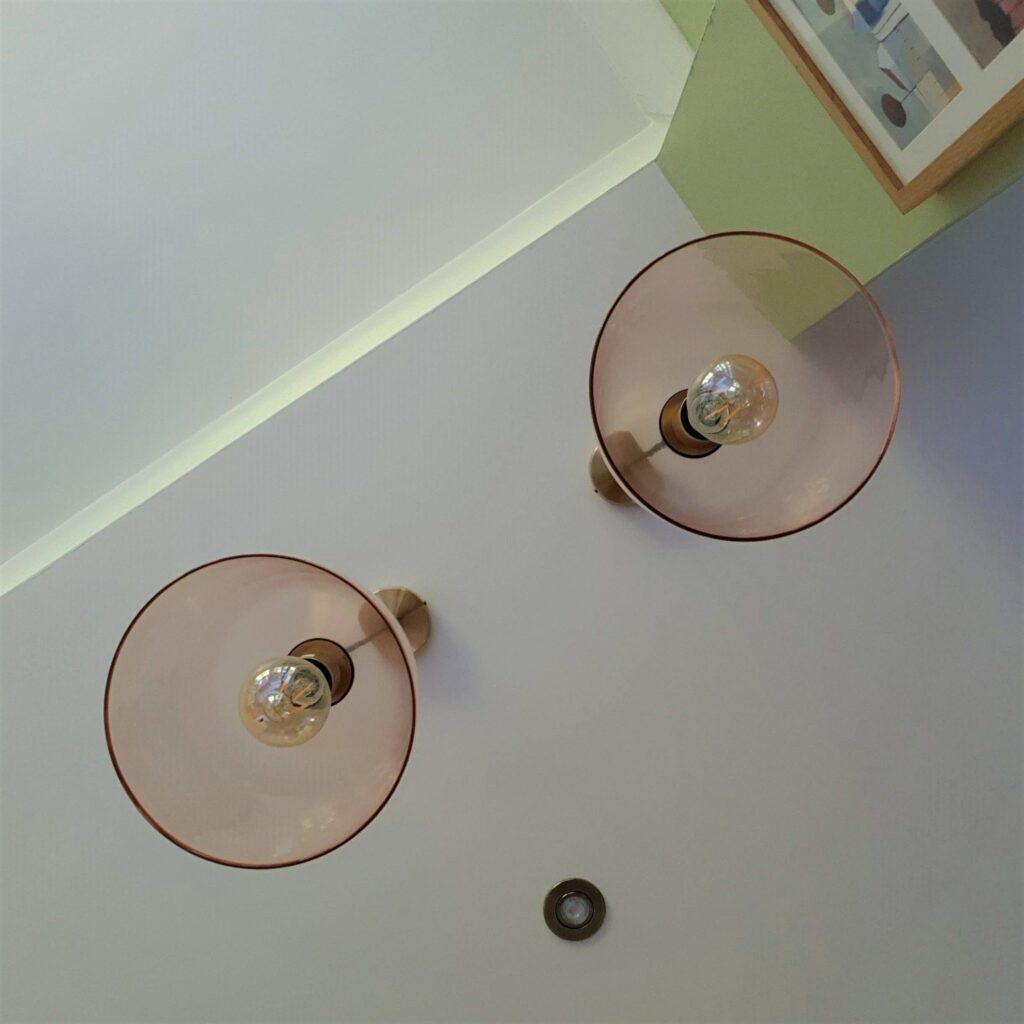Budget is, as already stated, the priority consideration, closely followed by what sort of space you have and if you are able to alter it physically in any way by knocking down walls or extending. These two factors are the main restrictions you will come across in any kitchen design project because they can restrict differently, but have a similar impact. You may have a fantastic budget, but not be allowed to alter a space physically due to planning and building regulations restrictions, but you don’t want to move house and therefore need to work with what you have. Conversely, you may have a large amount of outdoor space into which you could legally extend, but lack the budget to do so. These two factors are ones which we have to live with, so they need to be agreed upon from the outset, with a determination not to let these restrictions bother and frustrate the project. Acceptance is key if either of these factors are an issue in your project, so determine to live with what you can’t change and push ahead to make the improvements you can within your own unique restrictions.
Once you know the answer to these two major factors, you can start to plan in earnest. Here are the considerations which come next in our priority list:
- Age of your property. Do you want to make a statement by installing an ultra-modern kitchen in a period property, for example, or do you prefer to adhere to the age of your house and fit something in keeping with the period? If you choose the modern route, how will you enable the kitchen to sit within the space in a way which is not jarring, and will you perhaps enhance other original features within the space to create a contrast?
- Are you going to install an entirely new kitchen, or work with your current installation to improve how it currently works? See below for considerations when working with a kitchen you don’t currently have the budget to change fully.
- What is your preferred style of kitchen, bearing in mind your budget? There are many styles and ways to procure a new kitchen, from designed and hand-crafted by an artisan kitchen company, for example, Neptune, or John Lewis of Hungerford, to high street kitchen companies such as Magnet and Wren, who will help you design and plan your kitchen. Some companies enable customers to self-design using online design software, such as with the Ikea Kitchen Planner. You may consider buying an ex-display kitchen from a showroom, which would necessitate planning how the designed-for-showroom kitchen could be altered to fit in your own space. Perhaps you want an entirely free-standing kitchen and are prepared to source individual items of kitchen furniture from a range of places, including vintage emporiums or online auction sites. You may be keen to adapt the use of a low sideboard to that of a kitchen sink unit, installing a butler’s sink and necessary plumbing in the cupboard below, or make other design choices to incorporate your own specific taste.
- How much work do you want to do, or are prepared to do, yourself? A huge amount of money can be saved by doing your own planning, or painting and decorating.
- Can you knock through any interior walls to open up the space, creating a kitchen-diner or family room? Or perhaps you could add windows to your current walls, or increase the size of those currently installed if natural light is a problem in your kitchen. Consider installing Velux windows on a sloping roof, or a roof lantern on a flat roof, to allow more natural light to enter the space.
- Do you need to purchase new appliances or are you happy to continue to use the appliances you currently have? Cookers and hobs can be professionally cleaned to look like new, and spare parts for many appliances can be obtained from online companies such as epares.com. Oven cleaning companies will usually be able to supply replacement oven bulbs for a nominal amount when cleaning your oven.
- Thinking about your oven and hob, do you have both gas and electric supplies, or are you restricted to only electric for hob power? Can the current plumbing and electrics easily be moved? Often the full answer to this question can’t be ascertained until an old kitchen has been removed, and this often throws up unexpected barriers to progress while obstacles are navigated and overcome.
- Does your kitchen need to house laundry appliances (washing machine and tumble dryer), or do you have a separate utility room? If the latter, do you plan to redesign this space at the same time, and do you want to incorporate the same scheme and decorative choices in this space as in the kitchen?
- What is your ceiling height, and is it currently being exploited to the maximum to fit in as much storage as possible? Can you take wall units and tall floor-standing units higher in a new installation?
- What are your options for extraction? Will your extractor fan carry cooking steam outside, known as air extraction, or does your space necessitate the type which recirculates air within the space; air recirculation? If you are doing building work, you may be in the position to change your extractor type from air recirculation to air extraction by having the extractor pipe installed within the ceiling cavity to its exterior wall outlet.







